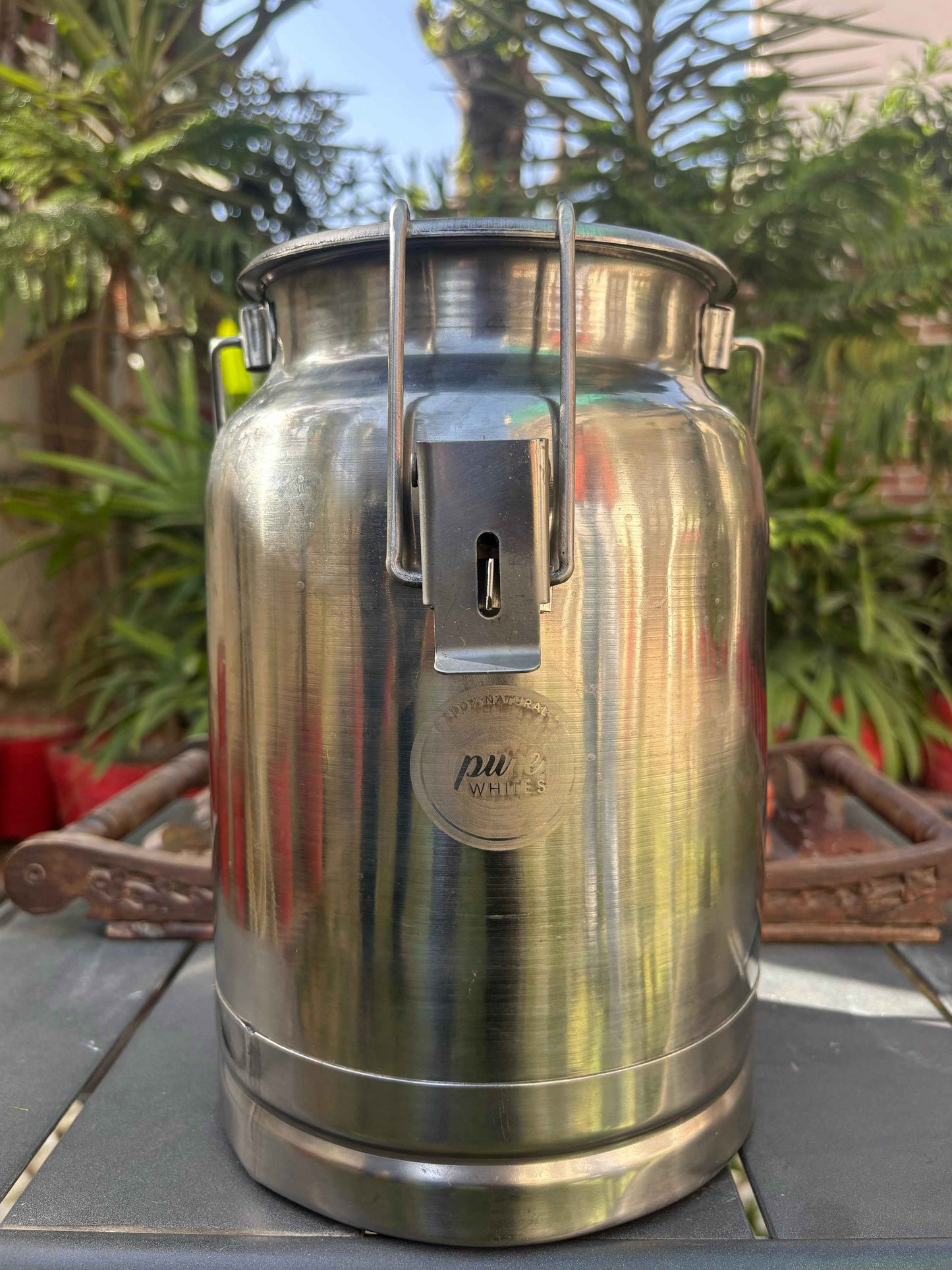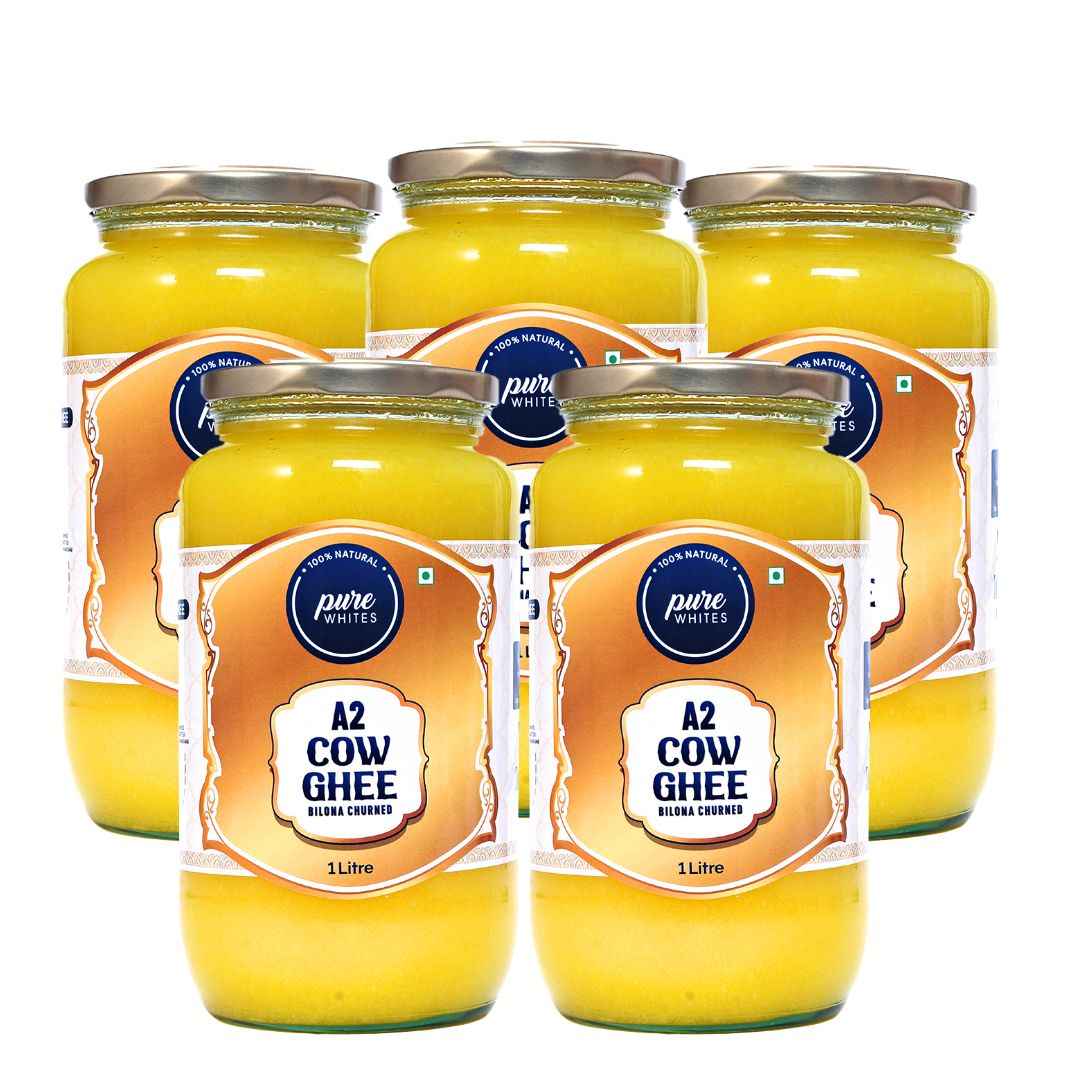A2 Desi Cow Ghee - Bilona Churned
A2 Desi Cow Ghee - Bilona Churned
Couldn't load pickup availability
Our A2 Bilona Cow Ghee is hand-churned using the traditional Ayurvedic process, where milk is first converted into curd and then churned to obtain butter. The butter is then heated over cow dung cake chulha to make Bilona Ghee.
Regular consumption of this ghee enhances physical and mental strength, keeping the body healthy and increasing its potency.
Free from pesticides and chemicals, it adds a delicious flavor and aroma to every dish.









Collapsible content
FAQs
Q. Why is Pure Whites A2 Bilona Cow Ghee more expensive than regular ghee?
A. Unlike commercial ghee made from cream and mass-produced milk, our ghee starts with milk from indigenous Indian cows—known for their A2 protein-rich milk. These cows give just 4–6 litres a day, making the milk precious and more nutrient-dense.
We don’t believe in shortcuts. No hormone injections. No artificial boosters. Our cows graze freely and feed on natural, home-grown fodder, the way nature intended.
The ghee is made using the ancient Bilona method, where curd is hand-churned with a wooden churner and slowly simmered in earthen pots. It takes 25–30 litres of milk to produce just 1 litre of ghee—which is why it's more expensive, but also why it's richer in taste, aroma, and nourishment.
When you choose Pure Whites, you’re not just buying ghee—you’re choosing purity, ethics, and authentic Ayurvedic preparation.
Q. Why does the taste, color, or smell of ghee vary from batch to batch?
A. Since our ghee is made in small batches from milk of free-grazing desi cows, natural variations occur due to season, fodder, and climate. This is a sign of authenticity and not a flaw.
Q. Why does your ghee feel lighter or more aromatic than the regular ghee I buy from the grocery store?
A. Most store-bought ghee is made from cream using industrial methods, often in steel machinery at high speeds, which can strip away natural aroma and nutrition. Our ghee is made by churning curd using the traditional Bilona method and then slow-cooked in small batches in earthen pots over a low flame. This slow, natural process preserves the rich aroma, light texture, and purity, making it noticeably different from mass-produced ghee.
Q. Is your ghee suitable for lactose-intolerant people?
A. Yes, our A2 Bilona Ghee contains negligible lactose and casein, as both are removed during the churning and heating process. Many lactose-intolerant customers use it without any issues.
Q. Do you ship in plastic jars?
A. No. We only pack in glass jars to maintain quality and prevent any chemical leaching that can happen with plastic especially since ghee is fat-rich and heat-sensitive.
Super 👍👍👍👍👍👍👍👍👍👍👍👍👍👍👍
Good test
very pure and good product
Its good
I have a perception that pure A2 cow ghee should be yellowish in colour, which your ghee is not. Secondly, when I put a few drops in my nostrils, it doesn't give that pleasing odor of Desi Ghee.
Lastly, I am consuming one table spoon of it with warm water empty stomach in the morning, but keeping the first two points in mind, I am getting apprehension that if it is not what it has been projected, it will give me fatty liver.
Kindly revert
Hi
As per the photos received from you the ghee is yellow in colour.
The ghee will look more yellowish when it is in liquid state.
The color is a natural, subtle yellow and not a bright turmeric yellow.
This yellow tinge comes from the ability of desi cows to absorb beta-carotene, a fat-soluble pigment found in their diet of green plants.









